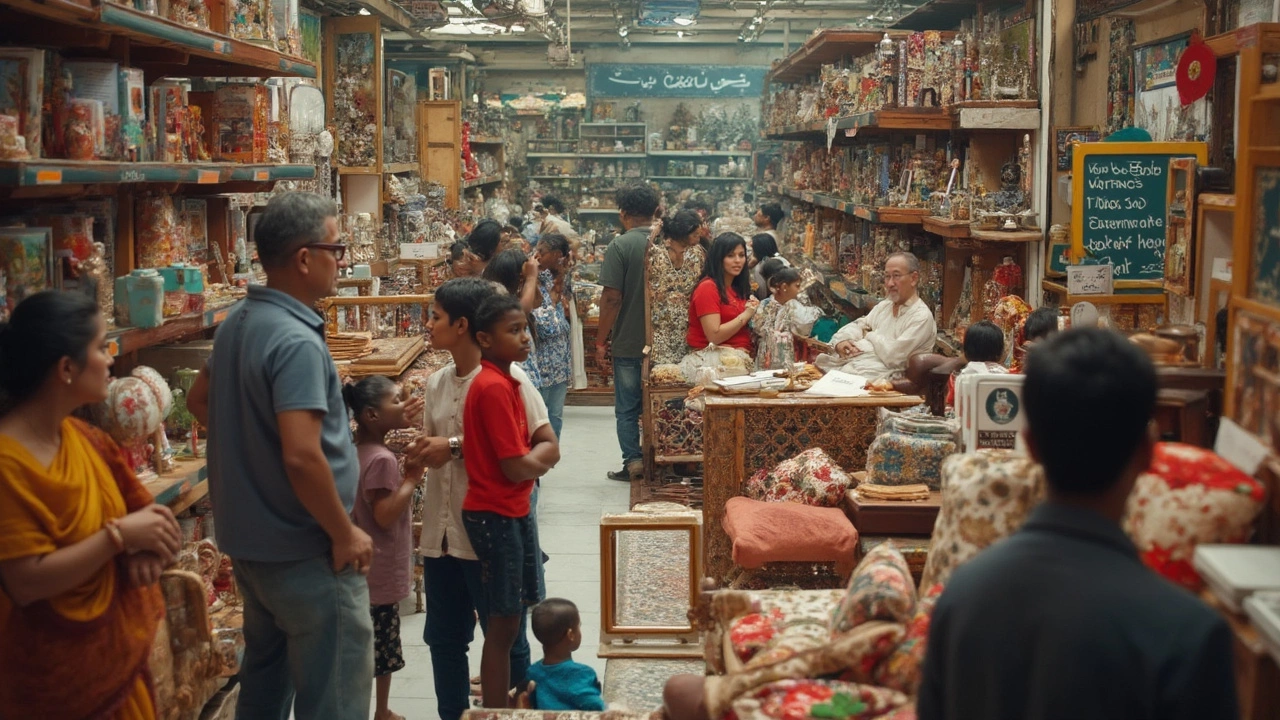Buying furniture for your home in India is trickier than it should be. There’s a flood of choices, with price tags that range from wallet-friendly to downright jaw-dropping. Finding a sofa that actually lasts through family movie marathons (and the occasional pillow fight) or a dining table that doesn’t wobble is a bit of a challenge.
One thing most people don’t realize? The ‘best’ furniture company isn’t always the one with the fanciest ads or the biggest showroom. What matters is the blend of quality, price, after-sales service, and how well a brand matches your actual lifestyle. For some, that means big names like Godrej Interio or Urban Ladder. For others, it’s the solid teak craftsmanship you spot in a local store or a focused brand that quietly nails comfort and durability.
If you’re hunting for sofas, beds, wardrobes, or even office chairs, Indian manufacturers have changed a lot in the last five years. Big players combine traditional woodworking with high-tech production, so you’ll see options from minimalist urban designs to heavy, classic sheesham-wood looks. But here’s something you won’t hear in most buying guides: always check reviews about delivery and after-sales service before you click ‘Buy Now’. Hidden issues—like tough assembly instructions or late deliveries—ruin the excitement faster than you’d expect.
- What Makes a Furniture Brand the Best?
- Top Furniture Companies in India Right Now
- Tips for Choosing Quality Furniture
- Trends and Insights from the Indian Furniture Industry
What Makes a Furniture Brand the Best?
If you’ve browsed through endless catalogs or spent hours hopping from one showroom to another, you know it’s easy to get lost in the details. But what truly sets a great furniture brand apart from the rest in India? It’s not just about a shiny showroom or a catchy jingle.
The top brands consistently deliver on these simple but critical things:
- Quality Materials: If the wood used is shoddy or the fabric is thin, your furniture won’t survive regular use. Reliable brands stick with solid-wood frames, sturdy engineered wood like MDF and HDF, and quality metal parts. Sheesham and teak are still favourites for Indian homes.
- Joinery & Build: Ever noticed a wobbly chair or a creaky bed? That’s usually bad joinery. Good companies use time-tested techniques like dowel, mortise-and-tenon, and proper screws—no shortcuts like excessive glue or weak nails.
- Consistency: Not just one showroom sample—can the brand deliver the same quality again and again, even when you order online?
- Design Options: Indian homes come in all shapes and styles, so brands need to offer variety—modern, classic, and stuff in between. Flexibility in customization is a big plus these days.
- Service: Delivery timelines, installation support, and after-sales help matter more than you’d think. A great sofa isn’t really great if it arrives scratched or if you spend hours arguing with customer care.
- Cost vs. Value: Don’t just chase the lowest price. The best brands justify a higher price with a longer warranty, better support, or sturdier products—cost-per-year-of-use is what counts.
Let’s look at some data from the industry to bring it all together:
| Factor | What to Expect from Top Brands (2025) |
|---|---|
| Warranty Coverage | Up to 5 years on major products |
| Average Delivery Time | 7-14 days (metros), up to 21 days (non-metros) |
| Material Used | Sheesham, teak, engineered wood, quality fabric/leatherette |
| Customer Ratings (Google, 2024) | 4.0+ out of 5 for established brands |
| Customisation | Available at almost all premium brands |
To sum it up, the furniture manufacturers India scene has gotten way more competitive, so brands can’t survive on looks alone. The real value comes from material quality, solid guarantees, prompt delivery, and a support team that actually picks up your calls. If you find all these boxes checked, you’re looking at a winner.
Top Furniture Companies in India Right Now
Not all companies in India play the same game when it comes to furniture. Some rule the online scene, some are kings of old-school woodcraft, and others bring value for money that surprises you. Here’s a straight-talking look at brands making real waves in the world of furniture manufacturers India market.
- Godrej Interio: You can spot a Godrej Interio store in just about every big city. They’ve been around for over 80 years and cover everything: home, office, even hospital furniture. Their USP? Reliable quality and a warranty most brands don’t match. They focus a lot on eco-friendly designs these days too.
- Urban Ladder: Started as an online-only brand, now also in physical stores. People go for Urban Ladder’s stylish, modern designs and smooth online shopping. They get praise for their solid delivery network and good after-sales service. You’ll find everything from sofas to bedding, and even quirky lamps if you hunt around.
- Pepperfry: These folks are all over the internet, plus they’ve set up physical ‘Studios’ for touch-and-feel shopping. They offer over a lakh (100,000+) products, from affordable basics to solid-wood statement pieces. Their frequent discounts and fast delivery make them popular with younger buyers.
- Durian: Durian stands out for their quality—especially if you’re looking for something fancy for your living room or office. They’ve been around since the 80s and have a reputation for long-lasting wood and premium finishes. People buy their stuff not just for homes but for businesses too.
- HomeTown: You’ll spot these showrooms in most malls. They offer home furniture, modular kitchens, decor, and more. One reason families like them: they provide interior design consultation with furniture packages. Convenience is a big win here.
- Zuari: This is a trusted name for strong, practical, and affordable wood furniture. Their stuff isn’t flashy, but it lasts. Great option for people on a tight budget, like students and new couples setting up first homes.
| Company | Year Founded | Key Products | Typical Price Range (INR) | USP |
|---|---|---|---|---|
| Godrej Interio | 1932 | Beds, Sofas, Wardrobes, Office Furniture | 5,000 – 2,00,000 | Reliable quality, eco-friendly, long warranties |
| Urban Ladder | 2012 | Sofas, Tables, Storage, Decor | 3,000 – 1,50,000 | Sleek design, easy online shopping, good service |
| Pepperfry | 2012 | All furniture categories | 2,000 – 1,80,000 | Huge product range, strong discounts, quick delivery |
| Durian | 1985 | Sofas, Recliners, Office Desks, Dining Sets | 10,000 – 3,00,000 | Premium materials, durability |
| HomeTown | 2006 | Beds, Sofas, Modular Kitchens, Decor | 3,000 – 1,50,000 | Showrooms, design services, one-stop shop |
| Zuari | 2001 | Beds, Tables, Study Units, Storage | 2,000 – 60,000 | Affordable, sturdy, no-frills |
A lot of people still pick up unique pieces from local furniture stores in cities like Jaipur, Mysore, or Kochi. These places sometimes offer handmade stuff you just can’t get with big chains. But if you want consistent pricing, reliable delivery, and easy returns, these companies lead the pack today. Picking one comes down to what you value most: is it looks, price, warranty, or just plain solid build quality? Think about your needs—and check out their actual reviews before taking the leap.

Tips for Choosing Quality Furniture
The Indian furniture market is packed with options, but quality still takes the top spot. Even when it looks fancy on a website, stuff like cheap plywood, wobbly joints, or fake reviews can throw you off. Here’s how to sort the good from the average—without needing a degree in carpentry.
- Check the Material: Solid wood—like sheesham, teak, or oak—beats particle board or MDF for durability. Laminates and veneer can look nice but inspect the core inside; a quick knock will sound hollower in cheaper pieces. For upholstered stuff, ask about the foam density and fabric type—cotton and leather usually outlast synthetics.
- Pull Drawers and Check Hinges: Don’t just look at display pieces in the showroom or photos online. Open and shut drawers, check the hinges, and lean on shelves a bit. Stuff that rattles or sags is a bad sign.
- Warranty Matters: Reputable brands like Godrej Interio usually offer at least 1-5 years of warranty on their primary pieces. If a shop refuses clear warranty details, that’s a red flag. Table below shows a quick warranty snapshot of popular Indian brands:
| Brand | Main Material Used | Average Warranty |
|---|---|---|
| Godrej Interio | Engineered Wood/Steel | 1-5 Years |
| Urban Ladder | Sheesham/Engineered Wood | 1-3 Years |
| Nilkamal | Plastic/MDF | 1 Year |
| Durian | Teak/Wood | 5 Years |
- Measure Twice, Buy Once: Grab a tape measure before shopping. I’ve seen folks order a massive sofa that doesn’t fit through the living room door. Double-check lift and corridor widths, too—especially if you live in an apartment.
- Scan Reviews (But Look for Real Ones): Verified buyer photos and comments about delivery delays (or damaged shipments) tell you more than five-word generic praise. Search for the best furniture company India reviews on trusted sites, not just the brand’s own website.
- Ask About Assembly: Some brands will set up everything for you at no extra cost, but others drop off boxes at your doorstep. If you hate building stuff with mini Allen keys, make sure you know what’s coming.
One more thing—don’t be swayed by seasonal discounts alone. Some shops spike their prices before slashing them just for a flashy sale. Always compare the spec sheet, actual material, and after-sales commitments before pulling out your credit card.
Trends and Insights from the Indian Furniture Industry
The Indian furniture market is buzzing, and it’s not just because there’s a new mall opening every month. A whopping 85% of demand still comes from household buyers, and everyone’s chasing that sweet spot—great design minus the ridiculous price tag. But here’s the twist: in the last couple of years, there’s been a big shift from mass-produced, boring pieces to furniture that actually reflects personal style (and can handle a crazy toddler like my son Vedant).
If you walk into stores now, you’ll see a lot of modular furniture—stuff that’s easy to move, fit into small city flats, or tweak when you redecorate. More Indians are renting than ever before, so solid wood isn’t always king. Particle board, engineered wood, metal—that’s what young buyers are picking for price and portability. Companies like Urban Ladder and Pepperfry were among the first to cash in on this rental-friendly vibe, and now traditional players are catching up.
Another big change? Online shopping for furniture manufacturers India is now totally normal. Eight years ago, most families wanted to ‘touch and feel’ a sofa before buying. Now, thanks to return policies and detailed virtual showrooms, about 30% of urban sales happen online. Even small-town buyers are logging in, comparing features, and reading actual buyer reviews before calling the local carpenter.
If you want to know how the furniture industry in India stacks up, just check these 2024 figures:
| Category | Figure |
|---|---|
| Estimated Market Size | ₹1.13 lakh crore |
| Share of Unorganized Sector | ~60% |
| Yearly Growth Rate | ~11% (CAGR) |
| Online Retail Share | ~30% (Urban Areas) |
| Most Popular Materials | Engineered wood, Sheesham, Mango wood |
Sustainability is another buzzword, but it’s real—brands are proudly pushing eco-friendly and recycled products now. IKEA (with massive Hyderabad and Bengaluru stores) and local brands like Nilkamal have entire ranges focused on sustainable wood and less-waste packaging. More buyers are willing to pay a little extra for something that doesn’t just look good, but also feels right ethically.
What’s next? Home office furniture sales are holding steady, even as people return to offices part-time. Multi-function pieces—think beds with storage, extendable tables—are everywhere because city homes are small and every inch counts. If you stick to the big, well-reviewed brands, you’ll see quicker deliveries, better warranties, and actual support lines (without endless call waiting).
The big takeaway: don’t just focus on the look. Check how easy something is to maintain, what the after-sales support is like, and whether the materials suit Indian weather (nothing worse than a bloated plywood table during monsoon). Follow these trends, and smart buying in 2025 won’t feel like a gamble.






